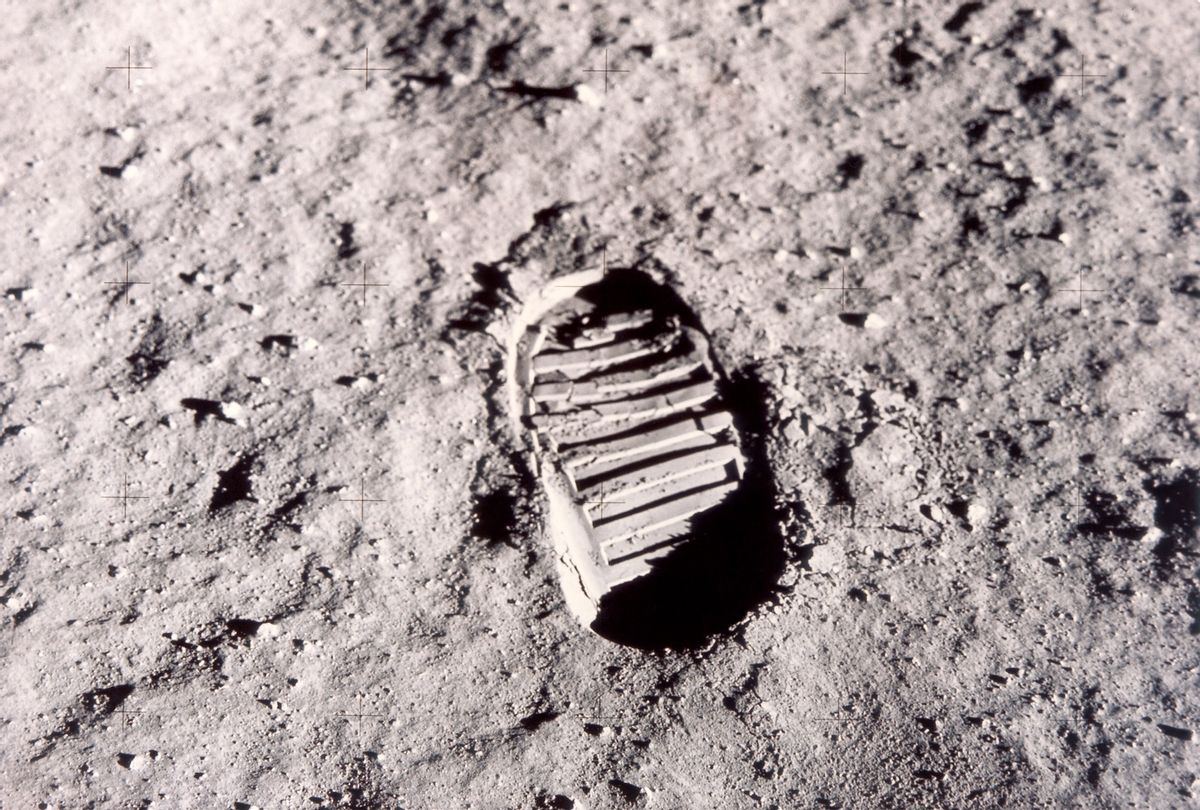We tend to think of the moon as little more than a barren rock, but it’s very, very dusty. However, this dust is a little different than the stuff that collects on our bookshelves. Every time an Apollo astronaut walked off the moon and into his spacecraft, he tracked a load of dust with him. Breathing dust in, as Harrison Schmitt reported during Apollo 17 in 1972, caused sneezing and allergies like "lunar dust hay fever."
A NASA study in 2005 noted the particles damaged instrument covers, spacecraft radiators and spacesuit seals and "generally coated everything with surprising tenacity." The floating, sticky dust, technically known as lunar regolith, also made it tough to see during landing or during surface activities; for example, the Apollo 11 astronauts in 1969 repeatedly tripped over an external TV cable obscured in powder.
These moon landing excursions only lasted a few days, at most. What about NASA's ambitions to remain on the moon for longer, including building bases? Apollo 17's Eugene Cernan warned the dust would be "one of the most aggravating, restricting facets of lunar surface exploration." More than 50 years later, a new Canadian experiment aims to tackle dust mitigation; its company's president, Jacob Kleiman, told Salon dust is "one of the hottest topics" in moon exploration.
The experiment rode to the moon March 2 aboard Blue Ghost, a private lander from Firefly Aerospace. Built by Integrity Testing Laboratory (ITL), a Toronto-area company, the experiment included two identical cylindrical wheels exposed to the surface for different lengths of time. Each had 15 "sample surfaces," which were monitored throughout the two-week mission to see how the dust adhered over time.
It will take many missions to the moon, with careful study of the dust, to understand its properties fully.
ITL's two sample surfaces on each wheel had a twist: dust mitigation technology. Engineers did years of testing on the ground suggesting they could limit dust accumulation, by using polymers designed to dissipate the electrostatic charge attached to the dust.
ITL will compare the data from their moon mission to what they gathered from samples on a ground-testing program similar to the moon, which varied the temperatures, dust simulants and times of exposure to a vacuum. If the dust accumulation pattern is a match, "hopefully, [we] will learn more about conditions on the moon that aided in formation of the dust patterns on lunar samples," Kleiman said.
It will take many missions to the moon, with careful study of the dust, to understand its properties fully. Kim Prisk, a professor emeritus at the University of California, San Diego, has been studying the effects of lunar dust on the human body for decades. "We currently do not know if any high surface reactivity – if it exists – persists in the lunar dust," he warned.
Want more health and science stories in your inbox? Subscribe to Salon's weekly newsletter Lab Notes.
Past studies, however, suggest why humans and equipment are so prone to issues, though the health risks are largely unknown. The dust's fine grains, just one or two microns in size, makes it easy to inhale and difficult to remove. The dust is also sharp due to slow erosion on the moon, Prisk observed: "this matters in terms of abrasive ability, for equipment."
Dust hovering and obscuring the landings is also no surprise, he said. Even small particles on Earth tend to fall slowly when suspended in water. Put similar bits into the light gravity of the moon, and they will drift for a long time. "There is nothing 'strange' about lunar dust," he said.
While ITL has no immediate plans to fly other experiments, once they see how well their dust mitigation works, they will bid for future flights. One example Kleiman cited is NASA's Commercial Lunar Payload Services program for private landers, which brought Blue Ghost and two Intuitive Machines landers to the surface already; only Blue Ghost has run a fully successful mission, however.
We need your help to stay independent
NASA tentatively will fly astronauts to the moon's surface again with Artemis 3, but the timeline is unclear. Official agency schedules suggest 2027, but the crew has not yet been named and the landing vehicle – SpaceX's Starship – is not yet certified to carry humans. The new Trump administration's budget in the coming weeks may determine the future of moon exploration.
In the meantime, new research into managing moon dust is ongoing, with NASA announcing on March 27 that its Electrodynamic Dust Shield successfully demonstrated its ability to remove regolith from its various surfaces on the moon during the Blue Ghost mission. These tests will ensure that lunar dust is no match for the human urge to explore the cosmos.



Shares